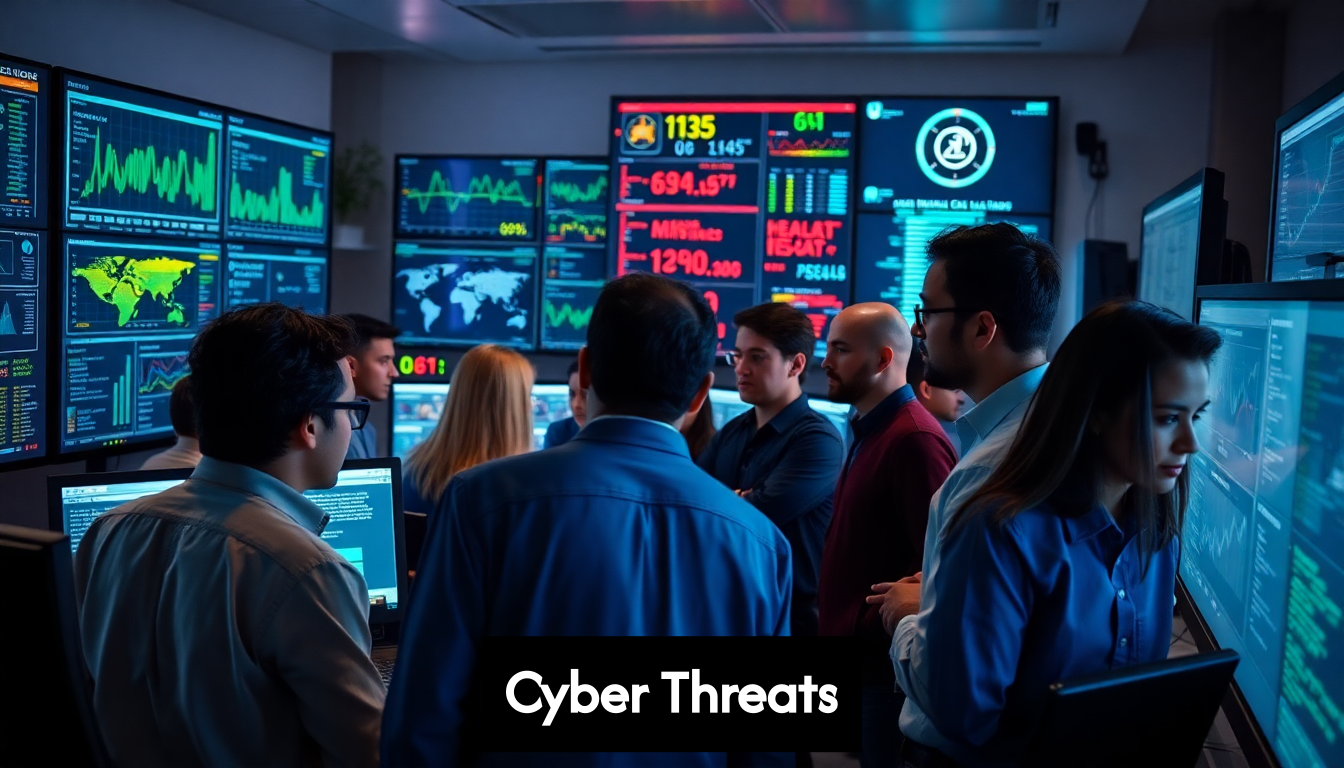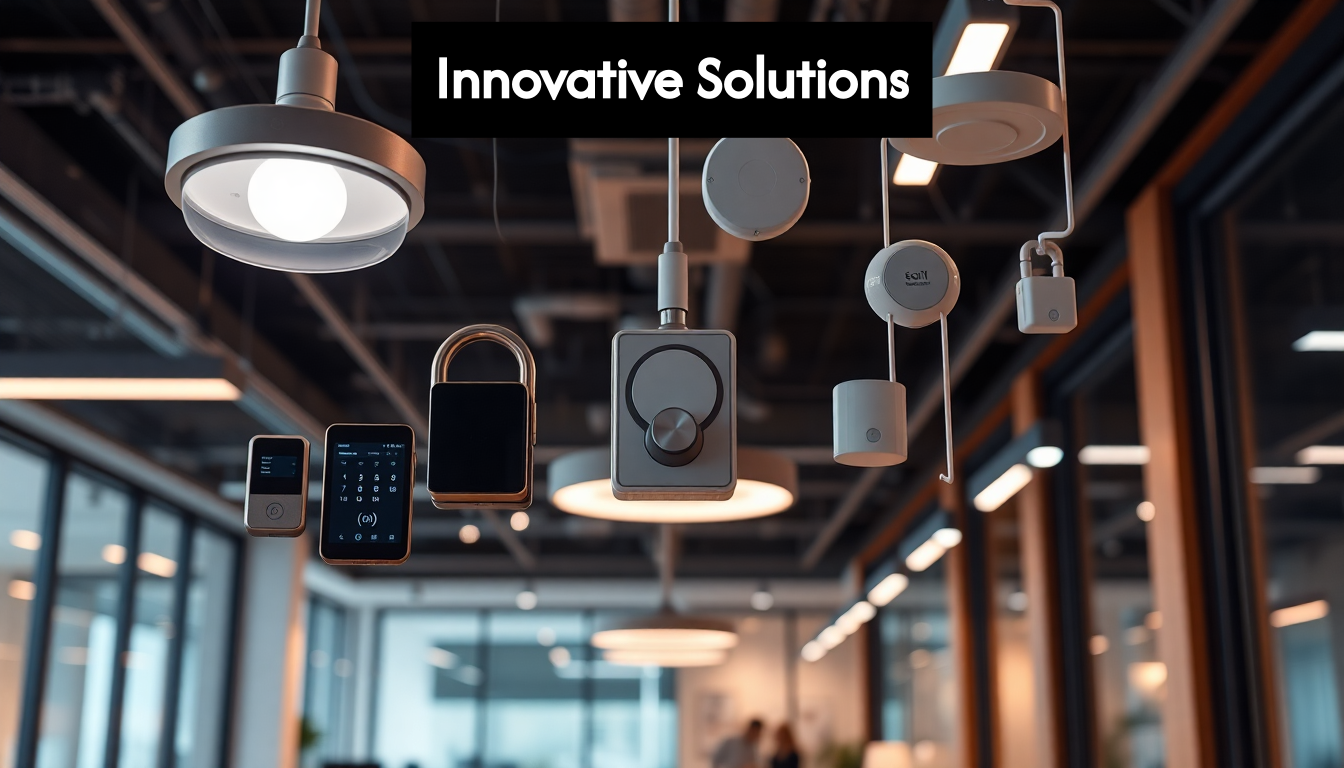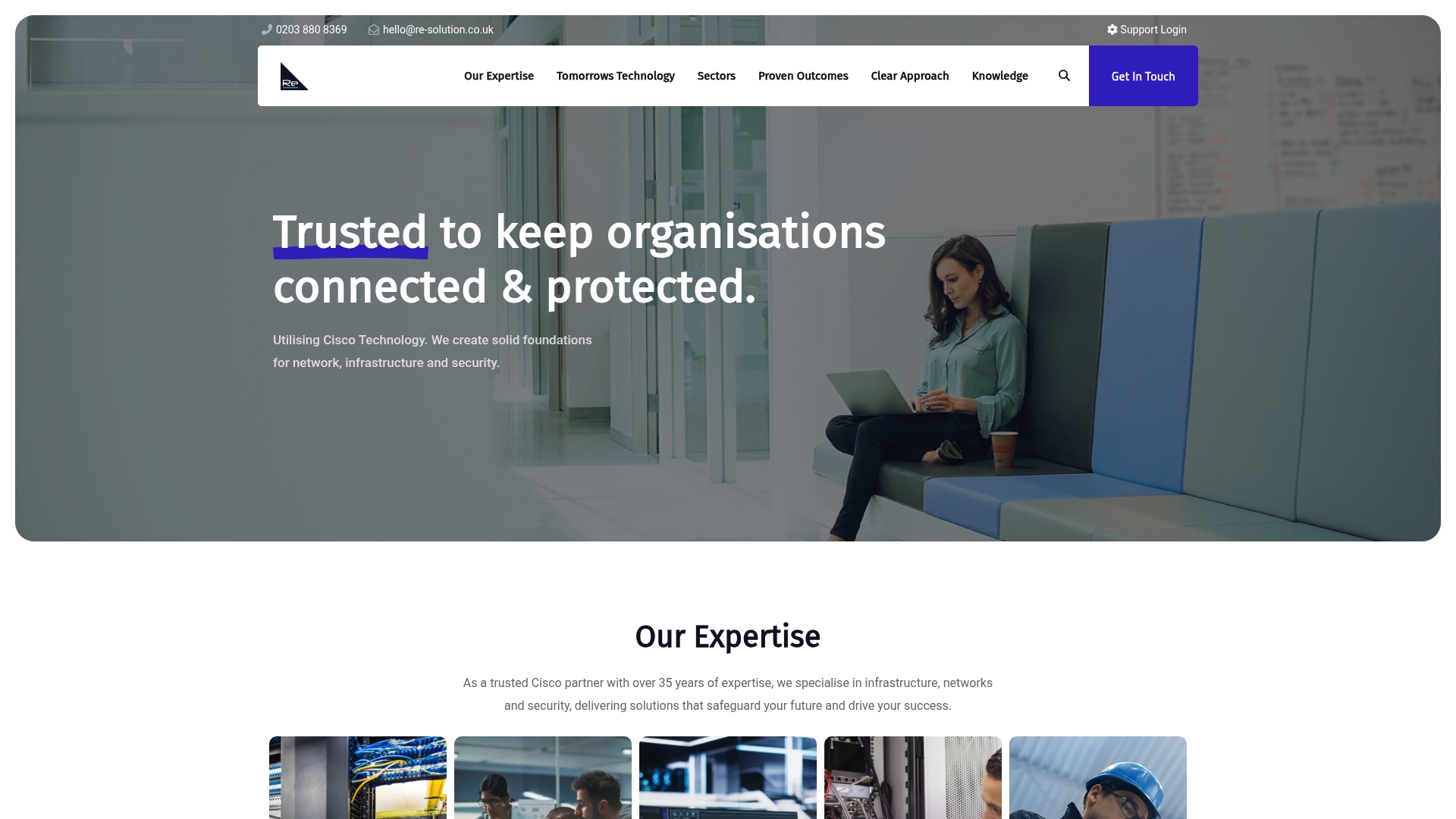
Cybersecurity is no longer just a concern for tech giants. With global cybercrime damages projected to reach $10.5 trillion annually by 2023, every organisation needs to take note. But hold on, the real shocker? The majority of these attacks are targeted at small to medium enterprises, not just the big players. As we delve into emerging trends in network security, it becomes evident that understanding these dynamics is crucial for survival in a world where digital threats lurk at every corner.
Evolving Cyber Threat Landscape

The cybersecurity landscape continues to evolve at a rapid pace, presenting significant challenges for organisations across all sectors. Understanding current trends in network security is no longer optional but essential for survival in our interconnected digital ecosystem. The threat landscape has become increasingly sophisticated, with attackers developing new methods to breach even the most robust security systems.
The Growing Scale of Cyber Threats
Cyber threats have escalated dramatically in both scope and impact. Global cybercrime damages are projected to reach $10.5 trillion annually by 2023, a staggering increase from $3 trillion in 2015 according to recent research. For educational institutions managing sensitive student data, manufacturing companies protecting intellectual property, or hospitality businesses safeguarding customer information, these figures represent a sobering reality.
The evolution of cyber threats isn’t merely about increased volume—it’s about transformation in sophistication and methodology. Attackers have moved beyond opportunistic approaches to highly targeted, persistent campaigns. For property developers and housing associations, this might manifest as attacks on smart building systems or tenant databases. Logistics businesses face threats to supply chain management systems that could disrupt operations and compromise sensitive shipping data.
Emerging Attack Vectors
As organisations embrace digital transformation, new vulnerabilities emerge across the expanded attack surface. Several key developments characterise the current trends in cyber security:
- Supply Chain Compromises: Attackers target less-secure elements in the supply chain to gain access to better-protected primary targets. Manufacturing companies and logistics providers are particularly vulnerable as they often work with numerous suppliers with varying security standards.
- Ransomware Evolution: Beyond simply encrypting data, threat actors now employ double or triple extortion tactics—stealing sensitive data before encryption and threatening to publish it, while simultaneously launching DDoS attacks to force payment. Shared workspaces and educational institutions have become prominent targets due to their often distributed security responsibilities.
- IoT Vulnerabilities: The proliferation of Internet of Things devices in environments like smart buildings, manufacturing floors, and hospitality settings creates new entry points for attackers. Many of these devices lack robust security controls, creating significant blind spots in network security.
Threat Actor Sophistication
The nature of threat actors has evolved considerably, reflecting one of the most concerning trends in information security. Nation-state actors, organised criminal groups, and hacktivist collectives now operate with unprecedented resources and capabilities.
These sophisticated threat actors employ advanced techniques, including living-off-the-land strategies that utilise legitimate system tools to avoid detection. They conduct extensive reconnaissance before launching attacks, often maintaining persistence in compromised networks for months before taking action. For hospitality businesses and shared workspaces, this could mean attackers lurking undetected in networks, monitoring communications and waiting for the optimal moment to strike.
The most troubling development may be the democratisation of advanced attack tools. Malware-as-a-Service and Ransomware-as-a-Service models have lowered the barrier to entry, allowing less skilled attackers to deploy sophisticated attack methodologies against targets of all sizes. This means even smaller organisations like independent educational institutions or boutique hospitality providers now face threats previously reserved for enterprise-level targets.
As we explore the latest trends in cybersecurity, it becomes clear that organisations must adopt more dynamic and proactive security strategies. The evolving threat landscape demands constant vigilance, as yesterday’s security solutions may prove ineffective against tomorrow’s attacks.
Key Takeaways
| Takeaway | Explanation |
|---|---|
| Evolving Cyber Threat Landscape | The sophistication and scale of cyber threats are increasing, requiring organisations to remain vigilant and adapt their security strategies to tackle persistent and targeted attacks. |
| Adoption of AI and Machine Learning | Implementing AI-powered security solutions can enhance threat detection and response, allowing for the identification of unusual patterns that may indicate a security breach. |
| Shift to Zero Trust Architecture | Embracing a Zero Trust approach ensures verification of all users and devices, reducing the risk presented by compromised credentials and enhancing security across diverse network environments. |
| Regulatory Challenges | Navigating complex regulatory landscapes is crucial; organisations must balance compliance demands with effective security practices to protect against modern threats. |
| Proactive Security Strategies | Future security measures should focus on proactive approaches, including continuous validation and threat intelligence analysis, to prevent breaches before they occur. |
Innovative Network Security Solutions

As cyber threats continue to evolve in sophistication and scale, organisations across sectors are turning to innovative network security solutions to strengthen their defences. These cutting-edge approaches represent significant trends in network security, offering more robust protection against emerging threats while addressing the unique challenges faced by various industries.
AI-Powered Network Protection
Artificial intelligence and machine learning have revolutionised network security, transforming defensive capabilities from reactive to proactive. Next-generation firewalls enhanced with generative AI and machine learning capabilities exemplify this shift, providing significantly improved threat detection and response mechanisms according to recent research.
For educational institutions managing vast networks across multiple campuses, AI-powered security solutions offer the ability to detect unusual patterns that might indicate a breach attempt, even when these patterns deviate from known attack signatures. Manufacturing companies benefit similarly, with AI systems that can differentiate between normal operational fluctuations and potential security incidents on factory floors where IoT devices are increasingly prevalent.
The implementation of machine learning in security systems provides continuous improvement through adaptation. These systems analyse vast quantities of network traffic data, identifying subtle anomalies that human analysts might miss. For hospitality businesses managing guest networks alongside operational systems, this capability proves invaluable in balancing security with accessibility.
Zero Trust Architecture
The concept of “never trust, always verify” has emerged as one of the most significant trends in information security. Zero Trust architecture fundamentally rejects the notion that network perimeters alone can provide adequate security. Instead, it requires verification for every user and device attempting to access resources, regardless of location.
This approach particularly benefits shared workspaces and property developers, where multiple tenants and visitors require network access while maintaining strict separation between users. By implementing granular access controls and continuous authentication, organisations create security environments where compromising a single credential provides minimal advantage to attackers.
Zero Trust implementation typically involves:
- Micro-segmentation: Dividing networks into isolated zones to contain breaches and limit lateral movement—crucial for logistics companies managing different operational departments
- Least privilege access: Granting users only the minimum permissions needed to perform their tasks—particularly valuable in educational settings with varying access needs among staff and students
- Continuous monitoring: Constantly verifying users and devices through behavioural analysis—essential for housing associations managing resident and maintenance access to systems
Advanced Threat Detection Systems
The latest trends in cyber security include significant advancements in threat detection capabilities. Modern systems now employ sophisticated techniques that go beyond signature-based detection to identify previously unknown threats.
Network traffic analysis has evolved considerably, with systems now capable of establishing baseline behaviour patterns and flagging deviations that might indicate compromise. For manufacturing environments with regular communication patterns between industrial control systems, these solutions can detect subtle changes potentially indicating tampering or sabotage attempts.
Deception technology represents another innovative approach, deploying decoys and honeypots throughout networks to mislead attackers and provide early warning of breach attempts. Hospitality businesses find this particularly effective in protecting guest information, as attackers targeting these valuable data repositories can be diverted to decoy systems that alert security teams.
For logistics and warehousing operations, where supply chain security is paramount, advanced breach detection systems provide crucial visibility into potential compromises across complex partner networks. These systems can identify suspicious data exfiltration attempts or unusual access patterns that might indicate a supply chain attack in progress.
As current trends in cybersecurity continue to evolve, organisations must remain adaptable, implementing these innovative solutions while preparing for emerging technologies and threats. The most effective security strategies balance technological solutions with appropriate policies, training, and incident response capabilities—creating defence-in-depth approaches that address the complex and dynamic nature of today’s threat landscape.
Regulatory Challenges in Network Security
Navigating the complex landscape of cybersecurity regulations presents substantial challenges for organisations across all sectors. These regulatory frameworks, while essential for establishing security standards, often create significant complications when implementing current trends in network security. Understanding these challenges is crucial for organisations seeking to balance compliance with effective security practices.
The Expanding Regulatory Environment
The global regulatory environment for information security continues to grow more complex, with jurisdictions around the world implementing increasingly stringent and diverse requirements. From the UK’s Data Protection Act and NIS2 Directive to industry-specific regulations, organisations face a patchwork of overlapping and sometimes contradictory compliance demands.
For educational institutions that operate internationally or host students from multiple countries, this regulatory complexity becomes particularly challenging. Similarly, manufacturing companies working across borders must navigate different standards for protecting intellectual property and operational technology. Research indicates that this uncertainty surrounding evolving cybersecurity regulations leads many businesses to delay or reduce their cybersecurity investments due to concerns about return on investment and compliance costs.
The pace of regulatory change often outstrips organisations’ ability to adapt, creating significant operational challenges. Hospitality businesses, for instance, must continuously update their data protection practices to align with evolving standards while maintaining seamless guest experiences. For property developers and housing associations, changing requirements for smart building security and resident data protection demand constant vigilance and system updates.
Compliance vs Security Effectiveness
One of the most significant trends in information security is the growing recognition that compliance does not necessarily equate to effective security. While regulations establish minimum standards, they often lag behind the latest cybersecurity threats and technologies. This creates a tension between meeting regulatory requirements and implementing the most current and effective security measures.
For logistics and warehousing businesses handling vast amounts of shipping and customer data, this tension manifests as challenges in balancing prescriptive compliance requirements with adaptable security approaches that address emerging threats. Similarly, manufacturing companies must reconcile regulatory demands with the operational necessity of securing industrial control systems against evolving attack methodologies.
The compliance-driven approach can sometimes result in a “checkbox mentality” that prioritises documentation over effective protection. Organisations may find themselves allocating resources to satisfy regulatory demands rather than addressing their most pressing security risks. Educational institutions, often operating with limited security budgets, face difficult decisions about whether to focus on compliance documentation or practical security improvements.
Resource Constraints and Implementation Challenges
Implementing robust security measures while meeting regulatory requirements places significant resource demands on organisations. This is particularly challenging for shared workspaces and smaller hospitality businesses, which may lack dedicated security teams but still face the same compliance obligations as larger enterprises.
The financial impact of regulatory compliance extends beyond direct implementation costs to include:
- Staffing requirements: Hiring or training personnel with expertise in both security and regulatory compliance
- Documentation overhead: Maintaining extensive records to demonstrate compliance during audits
- Technology investments: Implementing systems that satisfy specific regulatory requirements while providing effective protection
For property developers and housing associations, these resource constraints can be especially challenging when implementing security for residential technologies like smart locks and building management systems. Similarly, educational institutions often struggle to balance student privacy requirements with security monitoring needs while operating under tight budgets.
International Data Protection Challenges
Perhaps the most complex aspect of network security compliance involves cross-border data transfers and international operations. With different jurisdictions implementing varied approaches to data protection, organisations must navigate a complex web of requirements regarding data localization, processing, and security standards.
Manufacturing companies with global supply chains face particular challenges in this area, as they must ensure that their data protection practices meet the highest applicable standard across all jurisdictions where they operate. Logistics businesses transferring shipping information across borders encounter similar difficulties, with requirements sometimes changing as goods move through different territories.
The divergence between regulatory frameworks creates significant operational complexities, forcing organisations to implement multiple parallel compliance processes. This diverts resources from addressing the latest cybersecurity trends and implementing the most effective security controls.
As regulatory requirements continue to evolve, organisations must develop strategies that balance compliance with practical security effectiveness. This requires understanding not just the letter of regulations but their intent, allowing security teams to implement measures that satisfy compliance requirements while genuinely protecting against the current trends in cyber threats.
Future Roadmap for Network Security
As cyber threats continue to evolve in complexity and scale, organisations must look ahead to emerging trends in network security to maintain robust defences. A strategic roadmap for future security implementations can help educational institutions, manufacturing companies, logistics businesses, and other sectors prepare for the changing threat landscape while maximising the effectiveness of their security investments.
Beyond Traditional Security Models
Traditional security approaches are increasingly inadequate for addressing modern cyber threats. Research indicates that increased network complexity and attacker sophistication necessitate new security paradigms. This evolution is particularly relevant for property developers implementing smart building technologies and manufacturing companies integrating operational technology with IT networks.
The convergence of IT and OT environments in manufacturing and logistics settings demands security approaches that can protect both data and physical systems. Similarly, educational institutions managing diverse networks spanning administrative, research, and student environments require unified security frameworks that accommodate varying security requirements across different network segments.
Future network security architectures must transcend perimeter-based models, embracing continuous verification and contextual access controls. For hospitality businesses and shared workspaces, this might involve implementing advanced identity management systems that provide granular control over network resource access while maintaining a seamless user experience. Housing associations will need to balance resident privacy with the security requirements of increasingly connected building management systems.
Convergence of Security Technologies
The future of network security lies in the convergence of previously separate security domains. Extended Detection and Response (XDR) platforms represent one of the most promising trends in network security, integrating endpoint, network, and cloud security into unified systems capable of coordinated threat detection and response.
For logistics and warehousing operations with distributed networks spanning multiple locations, this convergence offers significant advantages. Rather than managing separate security solutions for each network segment, unified platforms provide comprehensive visibility and consistent policy enforcement across all environments. Manufacturing companies benefit similarly from the ability to correlate security events across operational technology and information technology networks.
This convergence extends to security operations, with automation playing an increasingly central role. Educational institutions and hospitality businesses, often operating with limited security staff, can leverage automated security responses to address routine threats, allowing human analysts to focus on more complex security challenges. The integration of AI-driven analysis with automated responses will become essential for organisations across all sectors as they face increasingly sophisticated threats.
Proactive Security Postures
The future of network security will emphasise proactive approaches over reactive responses. This shift represents one of the most significant trends in cybersecurity, focusing on preventing breaches rather than detecting them after they occur.
For shared workspaces and property developers, this might involve implementing continuous security validation platforms that simulate attacks against their networks, identifying vulnerabilities before attackers can exploit them. Manufacturing companies can adopt similar approaches for industrial control systems, using digital twins to test security controls without risking production environments.
The collection and analysis of threat intelligence will become increasingly sophisticated, with organisations leveraging shared data to identify emerging threats before they materialise. Educational institutions can benefit from sector-specific threat intelligence, allowing them to implement targeted defences against attacks specifically designed for academic environments. Similarly, hospitality businesses can use intelligence about attacks targeting customer data to enhance protection for reservation systems and guest information.
Adapting to New Computing Paradigms
Emerging computing paradigms will fundamentally reshape network security requirements. The widespread adoption of 5G technologies introduces new capabilities but also expands the attack surface, requiring security approaches designed for high-bandwidth, low-latency environments. Logistics businesses leveraging 5G for warehouse automation and manufacturing companies implementing Industrial IoT will need to implement security controls specifically designed for these environments.
Edge computing presents similar challenges, with processing moving closer to data sources rather than centralised in protected data centres. For property developers implementing smart building systems and housing associations deploying IoT-based monitoring, securing these distributed computing environments will become increasingly important. Effective security for edge deployments will require lightweight but robust protection mechanisms that can function with limited resources.
As organisations plan their security roadmaps, they must consider not just current threats but emerging attack vectors associated with these new computing paradigms. The most forward-thinking security strategies will include provisions for securing technologies still in development, ensuring that security considerations are integrated from the earliest stages rather than added as afterthoughts.
By understanding these future trends in network security, organisations across all sectors can develop strategic approaches that not only address current threats but prepare for tomorrow’s security challenges.
Frequently Asked Questions
What are the emerging trends in network security?
The key emerging trends in network security include the adoption of AI and machine learning for threat detection, the shift to Zero Trust architecture, the evolution of ransomware tactics, and the increasing sophistication of cyber threat actors.
How does Zero Trust architecture enhance network security?
Zero Trust architecture operates on the principle of ‘never trust, always verify’, requiring continuous verification of every user and device accessing network resources, thereby reducing the risk of unauthorised access through compromised credentials.
What impact does IoT have on network security?
The proliferation of IoT devices introduces new vulnerabilities, as many of these devices lack robust security controls. This creates additional entry points for attackers, necessitating enhanced security measures to manage the expanded attack surface.
Why is compliance with cybersecurity regulations challenging for organisations?
Compliance with cybersecurity regulations is challenging due to the complex and often contradictory landscape of laws across different jurisdictions. Organisations must balance meeting these regulatory demands with implementing effective security measures that address evolving cyber threats.
Secure Your Future in an Evolving Digital Landscape
In a world where cybercrime damages are skyrocketing, and attacks are increasingly sophisticated and targeted, the urgency for robust network security has never been greater. As highlighted in our article on Emerging Trends in Network Security, businesses across sectors—especially educational institutions, manufacturing companies, and hospitality businesses—are facing pressing challenges like supply chain compromises, ransomware evolution, and IoT vulnerabilities. It’s time to safeguard your organisation from these escalating threats.
!
Don’t wait for a breach to wake you up! With over 35 years of experience and as a trusted Cisco partner, Re-Solution provides tailor-made IT security solutions that empower your organisation to navigate the complexities of modern cyber threats. Whether through our Managed IT Services or innovative Network as a Service (NaaS), we prioritise your security and compliance needs, ensuring a resilient infrastructure that keeps your data protected.
Act now! Explore how our comprehensive security and compliance solutions can fortify your defences. Visit https://re-solution.co.uk to unlock a safer, more secure future for your organisation today!
